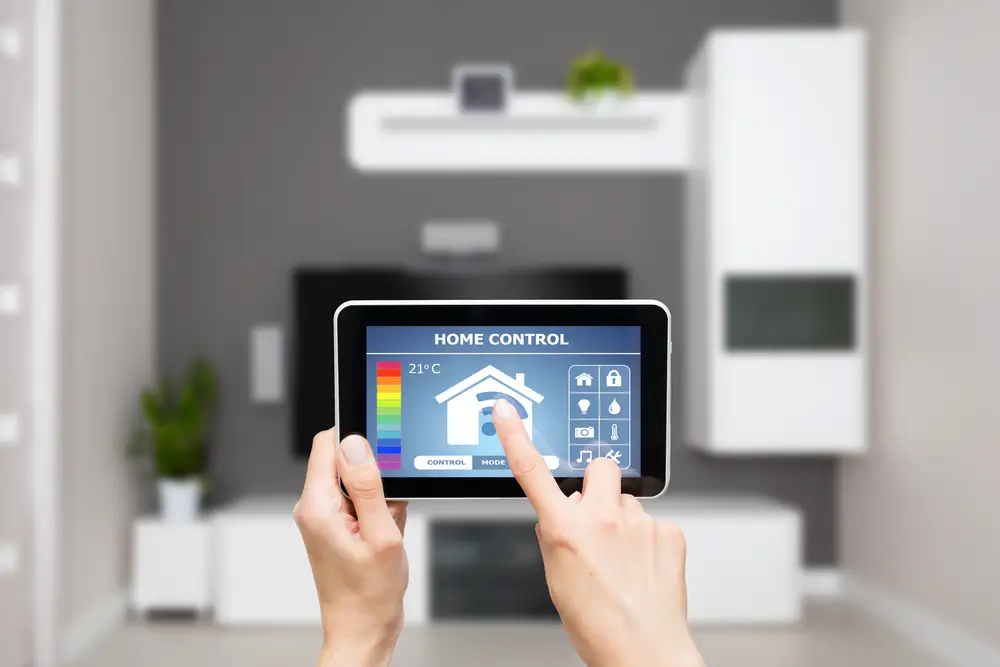Imagine walking into your new home, and with a simple voice command, the lights turn on, the thermostat adjusts to your preferred temperature, and your favorite music starts playing. This is not a scene from a sci-fi movie but the reality of smart homes today. For young couples ready to buy their first home, smart home technology offers a blend of convenience, efficiency, and a touch of futuristic charm.
What are Smart Homes?
Smart homes are equipped with interconnected devices that can be controlled remotely via smartphones, tablets, or voice commands. These devices range from smart thermostats and lighting systems to security cameras and kitchen appliances. The core idea is to create a seamless and automated living environment that adapts to your needs and preferences.
Smart Thermostat
One of the most popular smart home devices is the smart thermostat. Brands like Nest and Ecobee offer thermostats that learn your schedule and adjust the temperature accordingly, ensuring comfort while saving energy. Imagine coming home from work on a chilly evening to a perfectly warmed house without lifting a finger. This level of automation not only enhances comfort but also contributes to energy efficiency, reducing your utility bills.
Smart Lighting
Smart lighting systems, such as Philips Hue, allow you to control the brightness and colour of your lights through an app or voice commands. You can set the mood for a romantic dinner or a movie night with just a few taps on your phone. Additionally, these systems can be programmed to turn on or off at specific times. This enhances security by making it look like someone is home even when you’re away.
Security is another significant aspect of smart homes. Devices like Ring doorbells and Arlo cameras provide real-time video feeds and alerts, allowing you to monitor your home from anywhere. You can see who is at your door, communicate with visitors, and even deter potential intruders with built-in alarms. This level of security offers peace of mind, especially for young couples starting a family.
Implications of Smart Home Technology
However, as we marvel at these advancements, it’s essential to consider the potential downsides. Black Mirror, a popular anthology series, often explores the darker implications of technology. In the episode White Christmas, for example, smart home technology is used to create a nightmarish scenario where a person’s consciousness is trapped in a digital assistant, forced to serve its owner indefinitely. While this is a fictional and extreme portrayal, it raises valid concerns about privacy and control. Smart home devices collect vast amounts of data about your habits and preferences. This data helps improve services and provide personalized experiences, but it also poses privacy risks. Hackers could potentially gain access to your devices, compromising your security and personal information. It’s crucial to use strong passwords, enable two-factor authentication, and keep your devices updated to mitigate these risks.
Despite these concerns, the benefits of smart homes are undeniable, especially when they can adapt to your changing needs. As your family grows, you can add new devices and features to accommodate your lifestyle. Smart baby monitors, for example, allow you to keep an eye on your little one from any room in the house. As your children grow older, you can integrate educational tools and entertainment systems that cater to their interests.
And what about older houses and older people?
There’s a misconception that smart home technology is only suitable for new or modern homes. In fact, smart devices can be integrated into any home, regardless of its age. Many smart home products are designed to be retrofit-friendly. So they can be added to existing systems without major renovations.
Some people think that we can connect every smart home device to the internet at all times. While many devices do rely on internet connectivity for remote access and updates, they can still function locally without an internet connection. For example, you can control smart lights through a local network even if the internet is down. Another common misconception is that you need to be highly tech-savvy to set up and use smart home devices. In reality, most smart home products are designed to be user-friendly, with simple installation processes and intuitive apps. Many devices also come with customer support to help you start using them easily. You can start with a few basic devices, like smart bulbs or a smart thermostat, and gradually expand your system as your budget allows.
Smart home technology is not a trend that will eventually fade away. The growing adoption of smart devices and the continuous advancements in technology suggest that smart homes are here to stay. They offer tangible benefits such as energy savings, enhanced security, and increased convenience, making them a valuable addition to any home. Whether you’re looking to enhance security, save on energy costs, or simply enjoy the convenience of automation, smart homes offer a range of benefits that can improve your quality of life.

 Exploring the Latest Social Media Trends and How to Use Them
Exploring the Latest Social Media Trends and How to Use Them 10 Hidden iPhone Features You Didn’t Know Existed
10 Hidden iPhone Features You Didn’t Know Existed